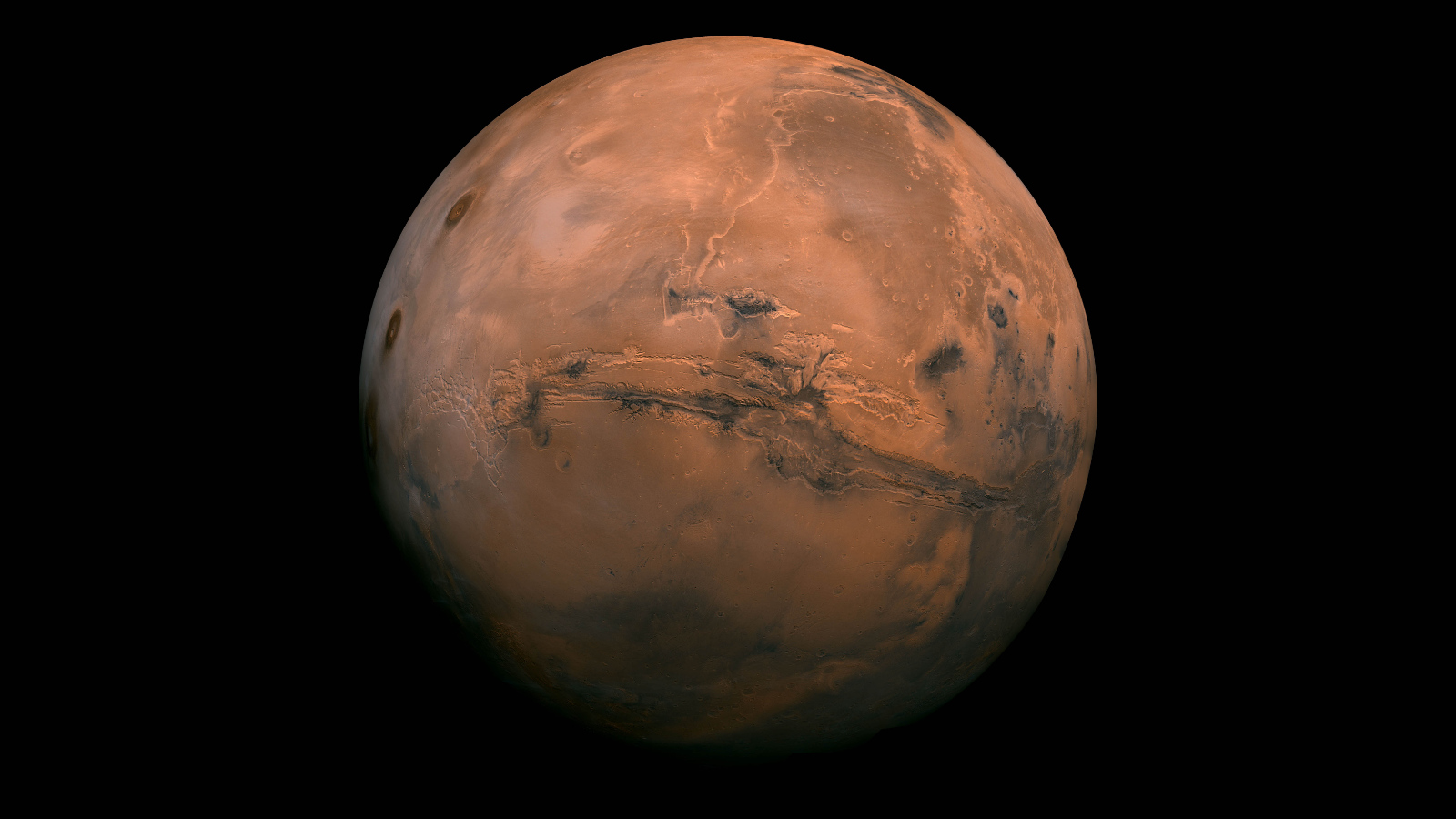The image of Mars made available by NASA shows the planet Mars. This composite photo was created from over 100 images of Mars taken by Viking Orbiters in the 1970s.
Facts about Mars:
Mars is the fourth planet from the Sun and the second-smallest planet in our Solar System, and is larger than only Mercury.
The planet was named after the Roman god of war by ancient Romans because its reddish colour was reminiscent of blood. The iron oxide prevalent on its surface gives it a reddish appearance (although only one-third of the surface is rusty). Due to its reddish appearance, it is also referred to as the ‘Red Planet’
Mars is a terrestrial planet with a thin atmosphere and has a crust primarily composed of elements similar to Earth’s crust, as well as a core made of iron and nickel. Mars has surface features such as impact craters, valleys, dunes, and polar ice caps. It has two small and irregularly shaped moons: Phobos and Deimos.
Read about the Planet Jupiter here.
How can we view Mars from Earth?
Mars can be observed from Earth when you look up in the night sky when it is closest to Earth. Depending on the weather and lighting in the area, you should be able to view Mars from Earth when it is closest to Earth in its orbit.
It is among the brightest objects visible from the Earth’s sky, with an apparent magnitude that reaches −2.94, comparable to that of Jupiter and surpassed only by Venus, the Moon and the Sun.
Historically, Mars has been observed since ancient times, and over the millennia, has been featured in culture and the arts in ways that have reflected humanity’s growing knowledge about our Solar System.
Is there life on Mars?
High-resolution mapping of the surface of Mars revealed no artefacts of habitation, but pseudoscientific speculation about intelligent life on Mars still continues. The idea that Mars was populated by intelligent Martians became widespread in the late 19th century.
Schiaparelli’s “Canali” observations combined with Percival Lowell’s books on the subject put forward the standard notion of a planet that was a drying, cooling, dying world with ancient civilizations constructing irrigation works.
Many other observations and proclamations by notable personalities added to what has been termed “Mars Fever”.
Reminiscent of the Canali observations, these speculations are based on small-scale features perceived in the spacecraft images, such as “Pyramids” and the “Face on Mars”.
In his book Cosmos, planetary astronomer Carl Sagan wrote: “Mars has become a kind of mythic arena onto which we have projected our Earthly hopes and fears.”









